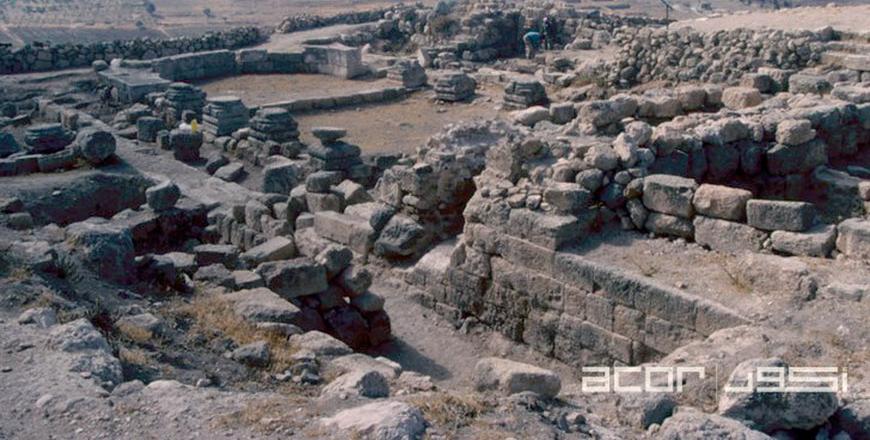You are here
Hisban resident’s book familiarises youth, tourists with local history
By Saeb Rawashdeh - Jul 24,2022 - Last updated at Jul 24,2022

Remains of the North Church in Tell Hisban, in the Madaba plains (Photo courtesy of ACOR)
AMMAN — A recently published book titled “Hisban” offers insight into archaeological sites of the area of the Madaba plains and interactions between the local community and international researchers.
Written by Hisban resident Abdullah Al Mashallah, the book describes the history of Tell Hisban from the Iron Age through the medieval and modern times, in addition to the local customs, tradition, scientific development and material evidence.
Hisban was a significant political and economic centre in the Roman and Byzantine periods, but its peak occurred during Mamluk (1250-1517) and Ottoman (1517-1918) empire times, Mashallah told The Jordan Times.
Mashallah volunteered as a liaison officer where he covered different posts within the municipality of Hisban and organised events, including the 50th anniversary of the Madaba Plains Project in 2018, which promoted bazaars that included Hisban women and their handicrafts and food products.
“This book targets two groups of people: The first one is the Hisban youth that should be educated about the cultural heritage and how to promote it; and the second group are tourists who are interested to see the site and historical monuments which belong to the area,” Mashallah said, adding that he hopes that in future he will continue to cooperate with the international and Jordanian archaeological teams and their research centres.
Professor Oystein LaBianca from Andrews University in Michigan said that he supported Mashallah by reviewing the manuscript and funding its publication.
The funding was provided by the American Society of Overseas Research, Lawrence T. Geraty Endowment for Community Archaeology, he said.
“It is an endowment that I hope will continue to benefit development of the local agency and ownership in caring for archaeological sites in Jordan,” LaBianca added.
Related Articles
AMMAN — Community archaeology, a form of archaeology directed by experts to local communities, originated at Tell Hisban during the seventie
TELL HISBAN — Over the years, the objectives of archaeological excavations at Tell Hisban, located in the Madaba Plain, have changed d
AMMAN — A mini-conference was organised on Wednesday at the German-Jordanian University and at a community centre in Hisban to mark the 50th














